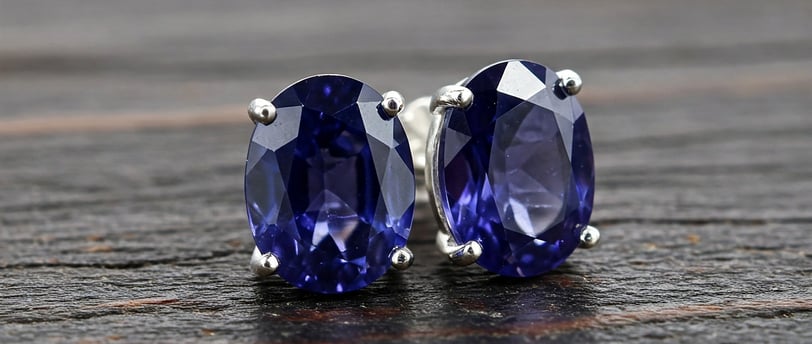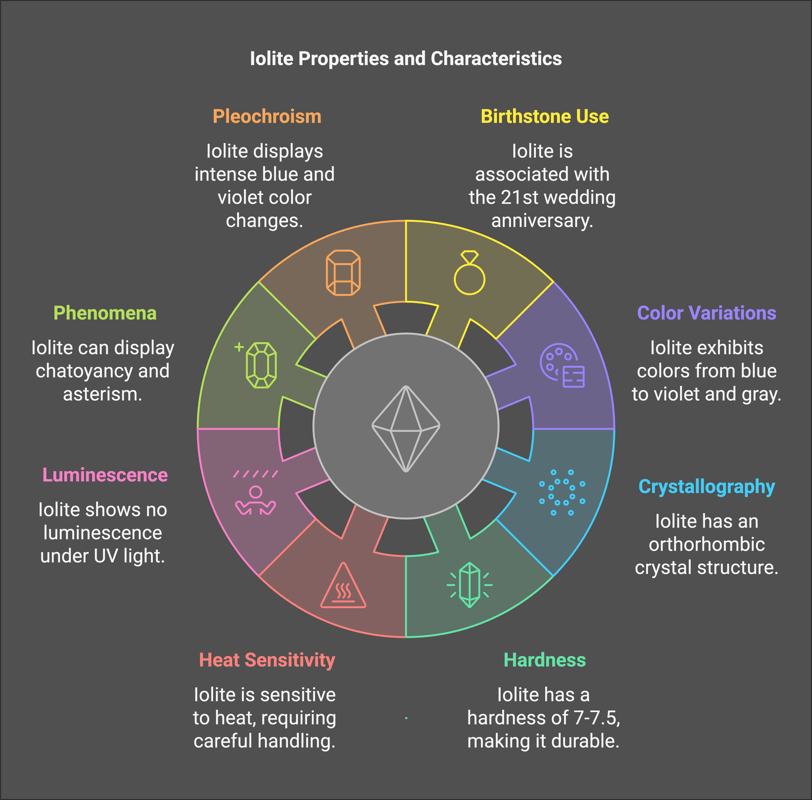Iolite
Iolite: a beautiful yet affordable alternative to sapphire and tanzanite, with a history as a Viking navigational aid. This gem displays a unique pleochroism and can be found in various cuts, making it ideal for a range of jewellery.
1/30/20253 min read


History
Iolite, also known as cordierite in mineralogy, has a fascinating history, with some believing that the Vikings used thin slices of iolite as polarizing lenses to locate the sun on cloudy days for navigation. The gemstone's name comes from the Greek word "ios," which means violet. This connection to ancient navigation adds a unique and intriguing element to the story of iolite.
Mineral Origins
Iolite is found in various locations around the world. Significant sources include India, Tanzania, Brazil, and Sri Lanka. It is a relatively accessible and affordable blue gemstone, gaining popularity through exposure in mail-order catalogues and cable shopping channels rather than traditional jewellery stores.
The 4 C’s
Colour
The most valuable iolite displays a saturated violet-blue hue. This colour is due to the presence of iron in its structure. Iolite is strongly pleochroic, meaning it shows different colours when viewed from different angles. A gem that looks blue from the top may appear nearly colourless, grey, or pale yellow when tilted or viewed from the side. Some iolites can appear greyish or nearly colourless. When cutting, it is important to orient the stone correctly to show the best colour through its table. Bluish iolites may show colourless to yellow, blue-gray, and dark violet pleochroic colours while violetish iolites display light violet, dark violet, and yellow-brown pleochroic colours.
Clarity
Eye-clean iolite is readily available and most valuable. Inclusions are not usually desirable except when they cause phenomena like cat's-eye or aventurescence. Cat's-eye iolites occur when long, tube-like inclusions are properly oriented within the gem. Aventurescence is a sparkly effect caused by numerous metallic, plate-like inclusions. Iolite with brownish or reddish platelets is known as “bloodshot” iolite.
Carat
Iolites can be found in sizes up to 10 carats, although fine faceted iolites over 5 carats are relatively rare. High-quality stones over 15 carats are considered museum pieces. The price per carat increases at one and ten carats.
Cut
Iolite's pleochroism and cleavage present challenges during the cutting process. Skilled cutters must carefully orient the stone to bring out the best colour. Iolite is often step-cut to enhance colour, but it can be found in many cutting styles. It is also seen in cabochons, carvings, and beads. Dark rough may be cut with a window or shallow cut to lighten the gem.
Be Aware Of
Enhancements
Iolite is not typically treated, which means that buyers can be confident they are purchasing a natural, unenhanced gemstone. There are no known treatments to lighten the colour or remove inclusions.
Simulants
Any gemstone can be imitated. Imitations can be made from man-made or natural materials selected to impersonate a particular gem.
Synthetics
Some gemstones have synthetic counterparts with essentially the same chemical, physical and optical properties as natural gems, but are grown in a laboratory. There is no mention of iolite having a synthetic counterpart in the sources.
Final Thoughts
Buying Tips
When buying iolite, look for a vivid violet to blue colour. Be aware that many iolites have a washed-out or inky look, so a highly saturated iolite is ideal. The most valuable iolites will be eye-clean, unless they display desirable phenomena such as cat's-eye or aventurescence. The price per carat increases with the size of the stone. Iolite is considered an affordable alternative to more expensive blue gemstones like sapphire or tanzanite.
Jewellery Care
Iolite is a hard stone (7-7.5 on the Mohs scale), making it suitable for jewellery. However, it has a distinct cleavage, making it prone to fracture, so some care should be taken. Iolite is best suited for use in pendants, brooches, and earrings and should be set in protective settings to help prevent fracture. It is also heat sensitive and shouldn't be heated during setting or steam cleaned. Warm, soapy water is always safe for cleaning iolite. It is recommended that iolite jewellery is removed before sleeping.


Gemius Stones
Expertise
© 2025. All rights reserved.
